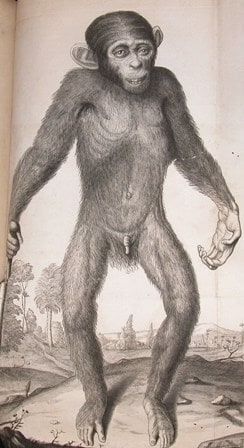Monday, 29 March 2010
Thursday, 18 March 2010
Monkey Glands

Voronoff solved this crisis by slicing and grafting the testicles of monkeys onto those of the men who sought his treatment. In his book, Rejuvenation by Grafting (1925), Voronoff promised the patients who acquired his monkey glands that they’d be able to work longer, and that they would be blessed with improved memories, eyesight, and sex drives. He set up a special breeding center on the Italian Riviera for chimpanzees, gorillas, and orangutans that was run by a former circus-animal keeper. ..."
I really think this magazine is really, really great (but not so great that I'd pay for it...).
from Vasectomania and Other Cures for Sloth, Christopher Turner
www.cabinetmagazine.org (again)
Visual Cognition Experiment
Today I took part in a visual cognition experiment. It involved putting my gulliver in the above padded frame and watching tv for an hour; the worst of which was 10 minutes of two students playing table tennis. There was no Ludwig Van. I was paid six pounds for my time though, and when the hour was up I was deemed fit to rejoin society.
Sunday, 14 March 2010
Man Machine
The Princeton Engineering Anomalies Research (PEAR) program was established at Princeton University in 1979 by Robert G. Jahn, then Dean of the School of Engineering and Applied Science, to pursue rigorous scientific study of the interaction of human consciousness with physical devices, systems, and processes common to contemporary engineering practice. Since that time, an interdisciplinary staff of engineers, physicists, psychologists, and humanists has been conducting a comprehensive agenda of experiments and developing complementary theoretical models to enable better understanding of the role of consciousness in the establishment of physical reality. Though the research of PEAR does state statistical significance, there exist critics who wish to further examine PEAR methodologies and may question their interpretation of the collected data.

"In the end, it took the better part of a year (and something close to $100,000) to realize the handsome device that adorned the wall of the PEAR laboratory for some twenty years, and that clattered through more than ten thousand cycles under the watchful eye of hundreds of experimenters who sat on the plush couch before it and thought “go right” or “go left” for hours on end. The total tally and final configuration of each run (a full cycle took about fifteen minutes) were meticulously recorded in dozens of laboratory notebooks, which amount to the archival residue of the most sustained effort ever undertaken to test whether, in fact, faith can move a mountain—a small, controlled mountain of polystyrene balls. "
"Human minds can affect random physical processes, to a minor but statistically detectable degree..."
http://www.cabinetmagazine.org/issues/34/burnett.php
Wednesday, 10 March 2010
Monday, 8 March 2010
sounds of space
http://www-pw.physics.uiowa.edu/space-audio/
I recently heard some "solar music" on a scientific radio show. Scientists specialising in the sun were saying the inside of the sun vibrates like a goddamn guitar! The sound waves coming from the core, although unrecordable as such because of the burning hellfire, reverberate to the surface and their frequencies would translate into melodic, harmonious sounds.
Not so easy to find this stuff but I'll keep looking
Set the controls for the heart of the sun
I recently heard some "solar music" on a scientific radio show. Scientists specialising in the sun were saying the inside of the sun vibrates like a goddamn guitar! The sound waves coming from the core, although unrecordable as such because of the burning hellfire, reverberate to the surface and their frequencies would translate into melodic, harmonious sounds.
Not so easy to find this stuff but I'll keep looking
Set the controls for the heart of the sun
Sunday, 7 March 2010
Jodrell Bank





From the original 1951 proposal for the worlds biggest steerable telescope at Jodrell Bank. The document, which is a hand bound blue book, has been scanned and posted on the Jodrell Bank website. It's not much of page-turner, but the presentation is quite pleasing in its lack of polish.
I don't know whether the place is particularly significant today. I used to visit here quite a lot as a child. Big stuff.
Monday, 1 March 2010
Haüy
Subscribe to:
Comments (Atom)



